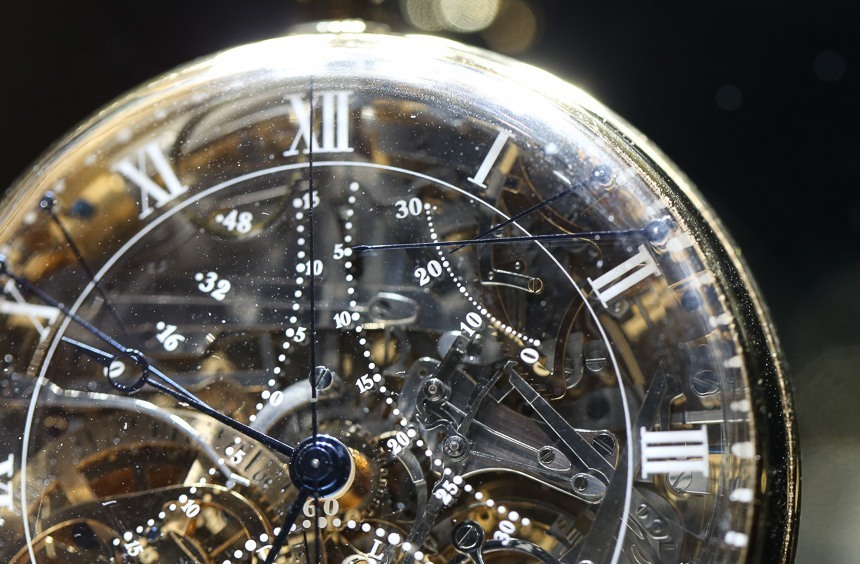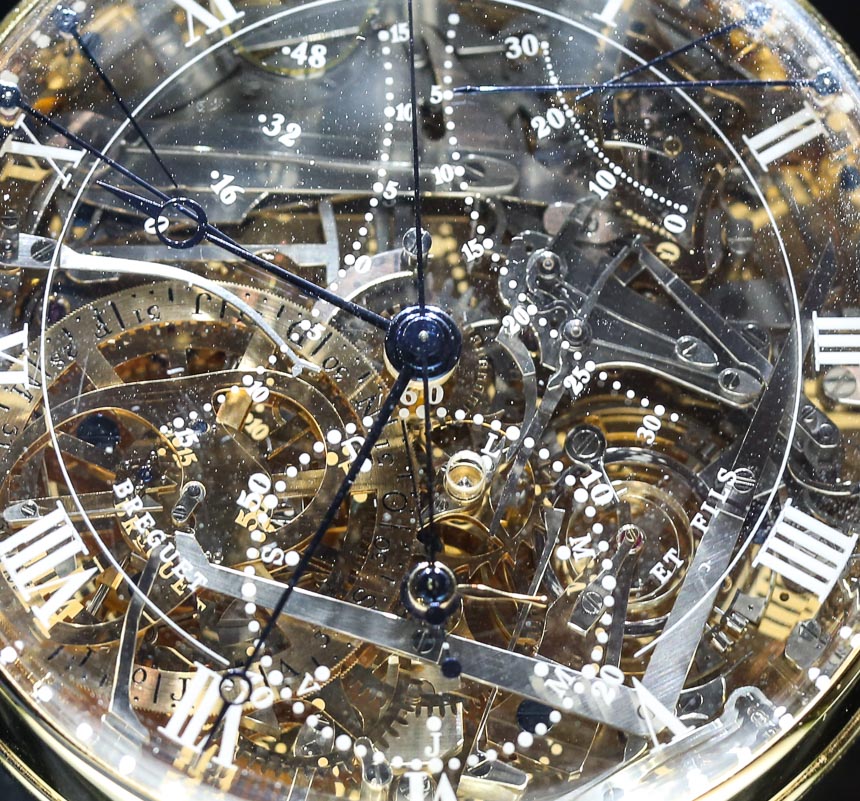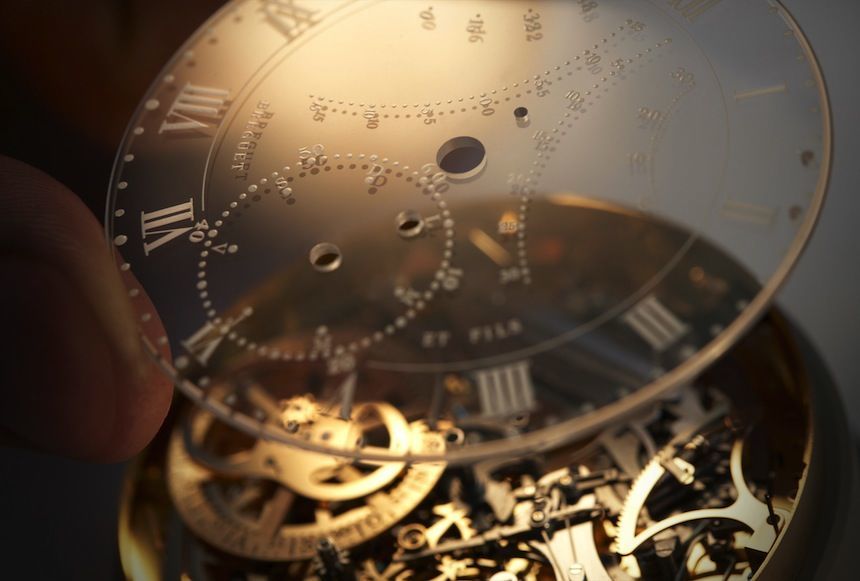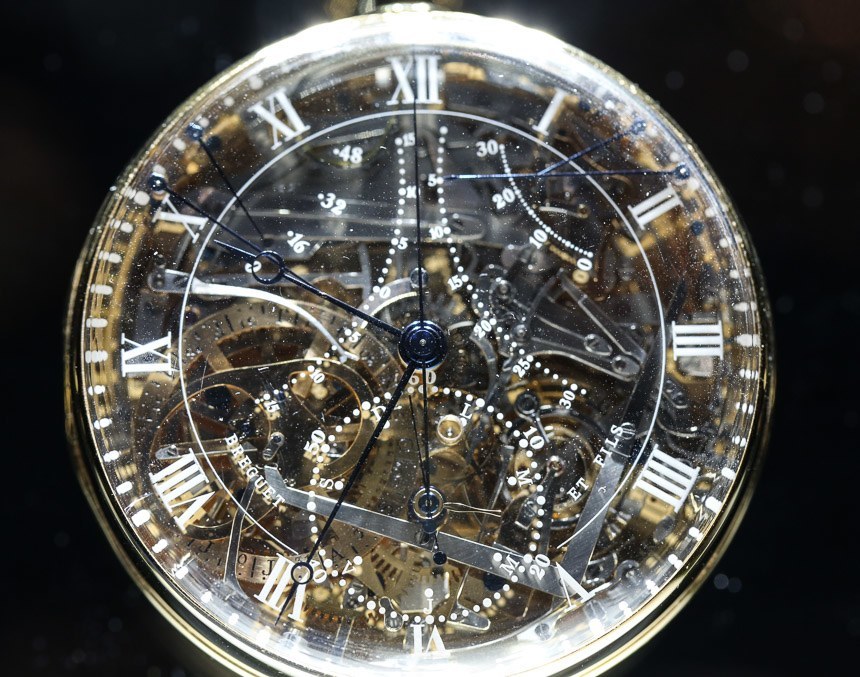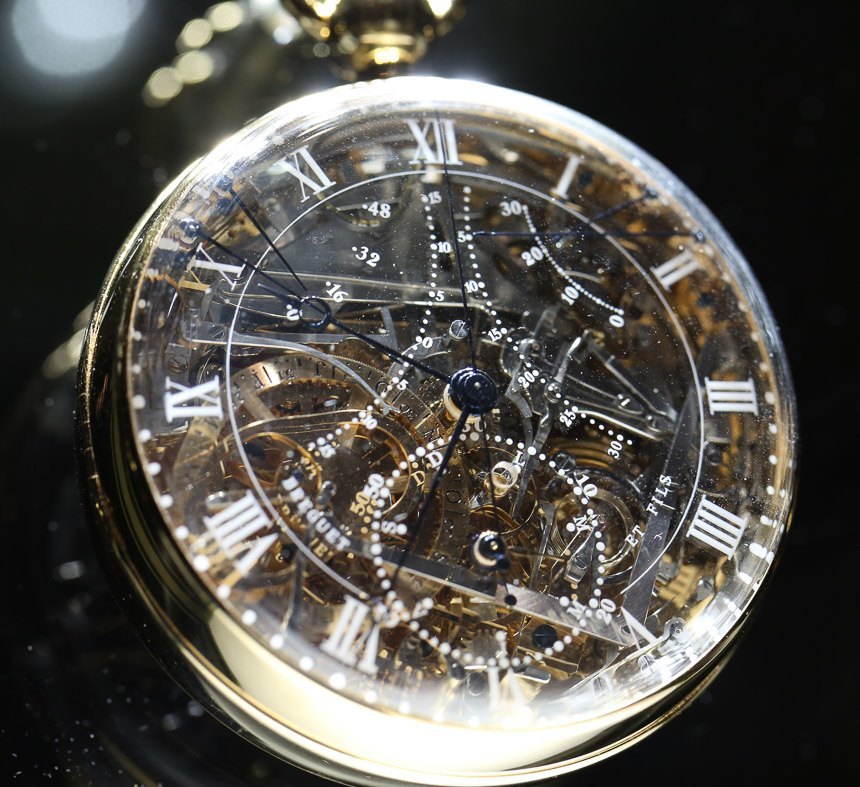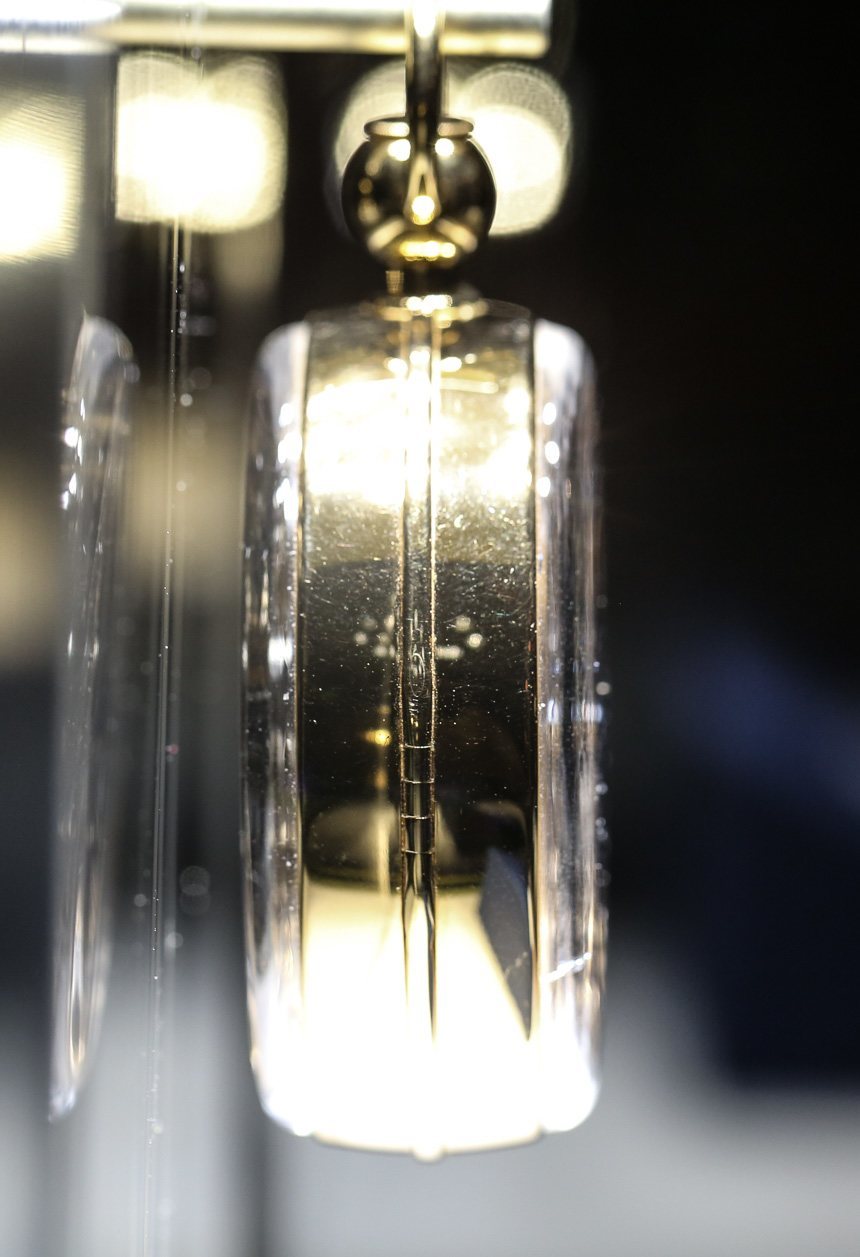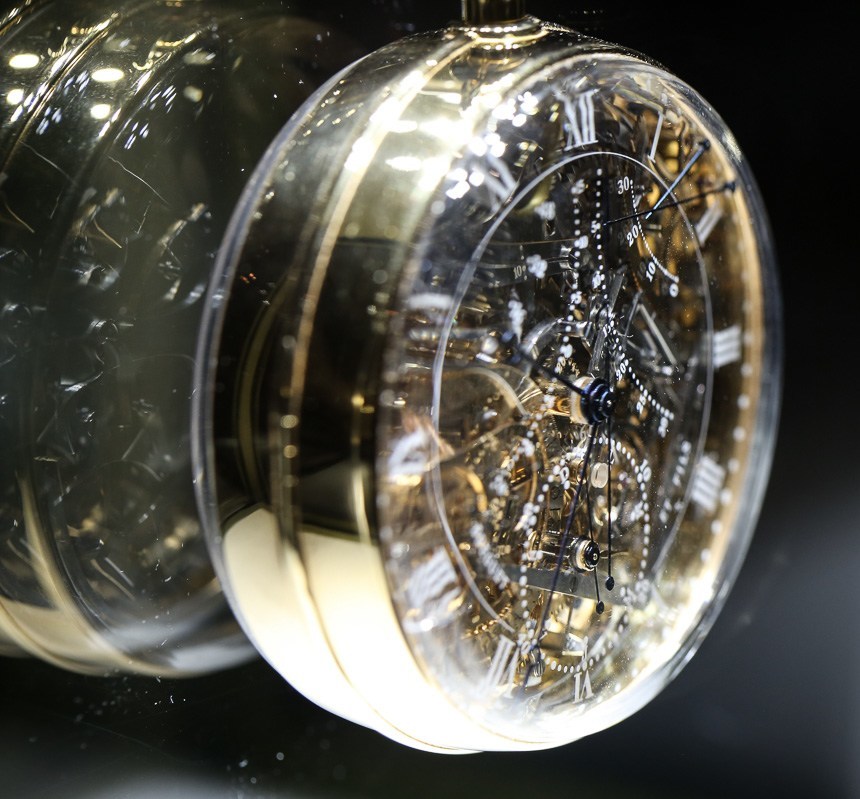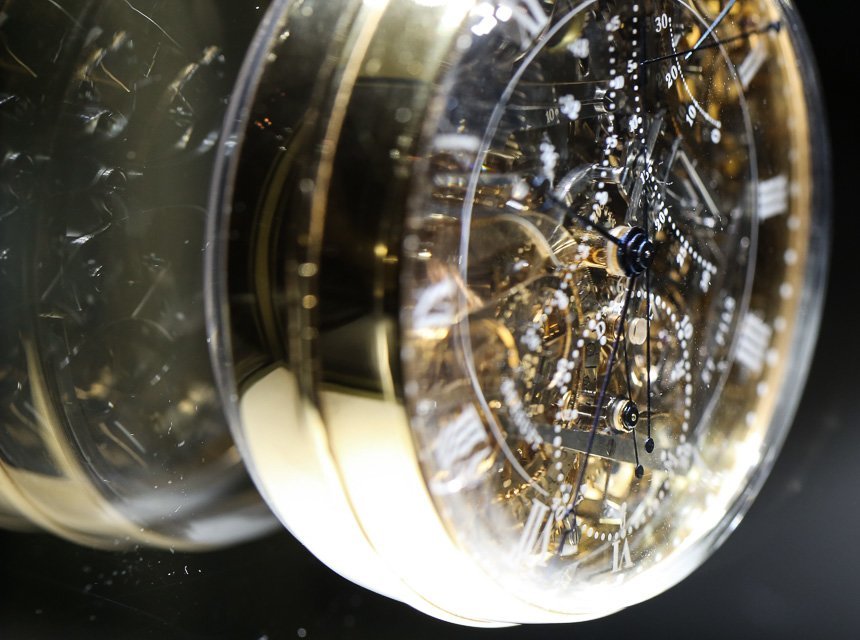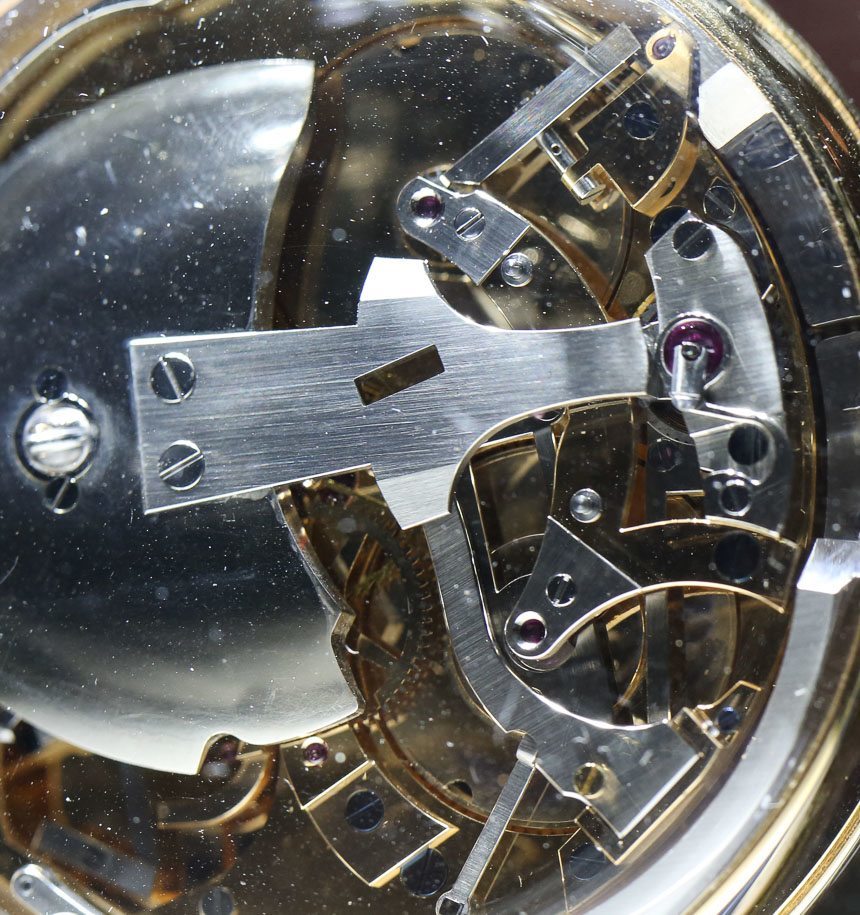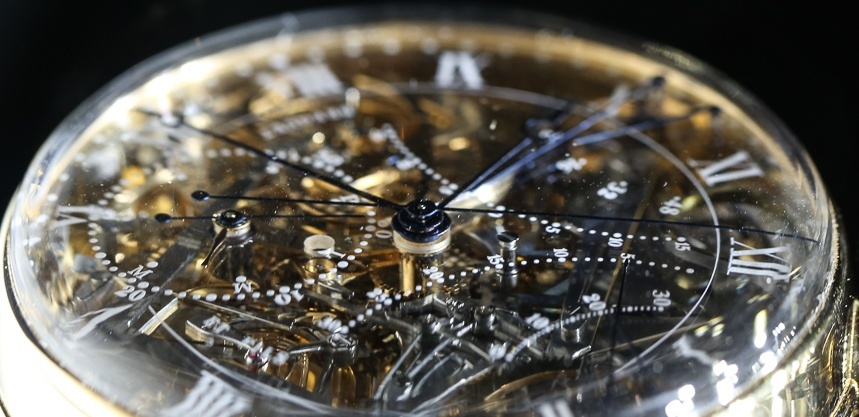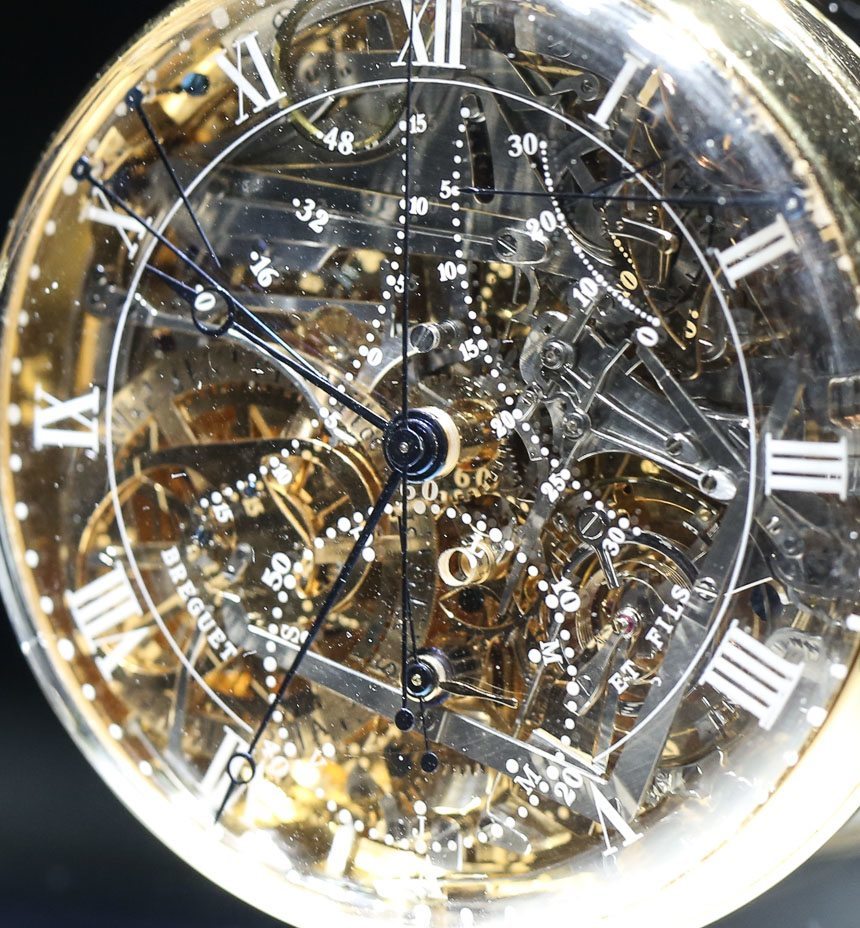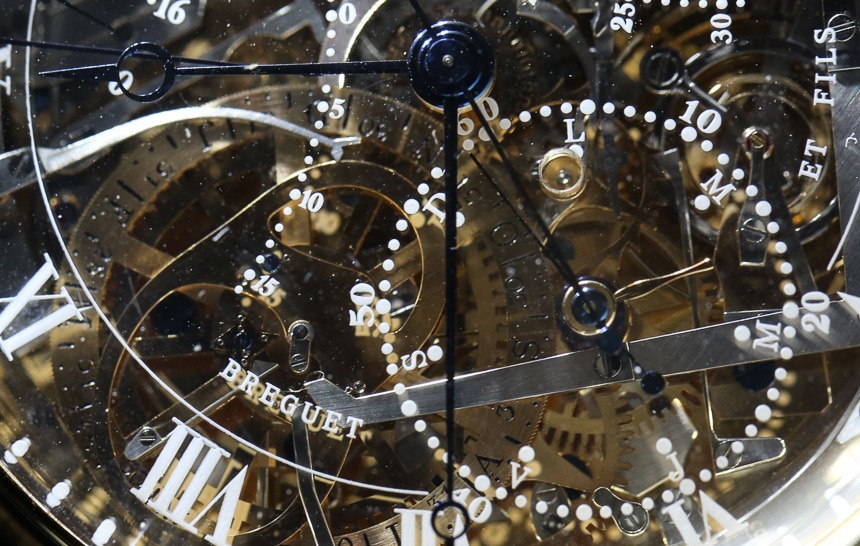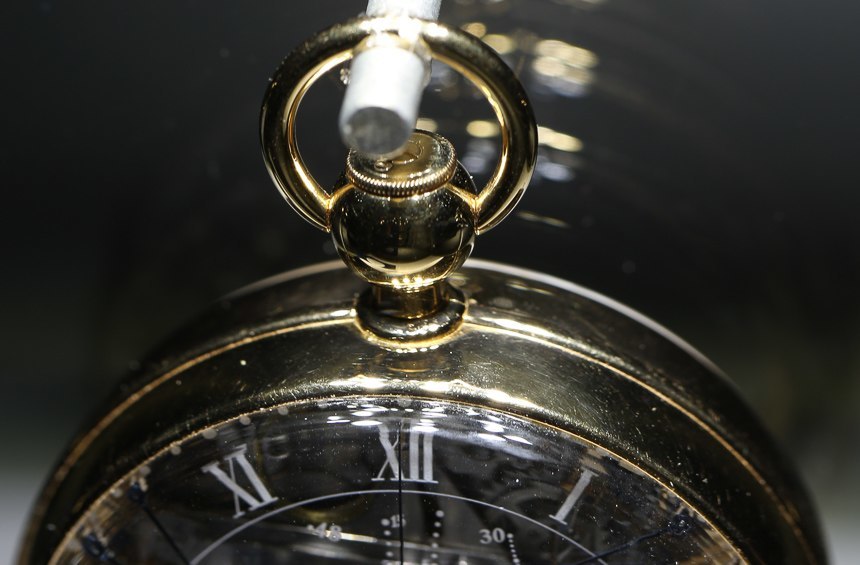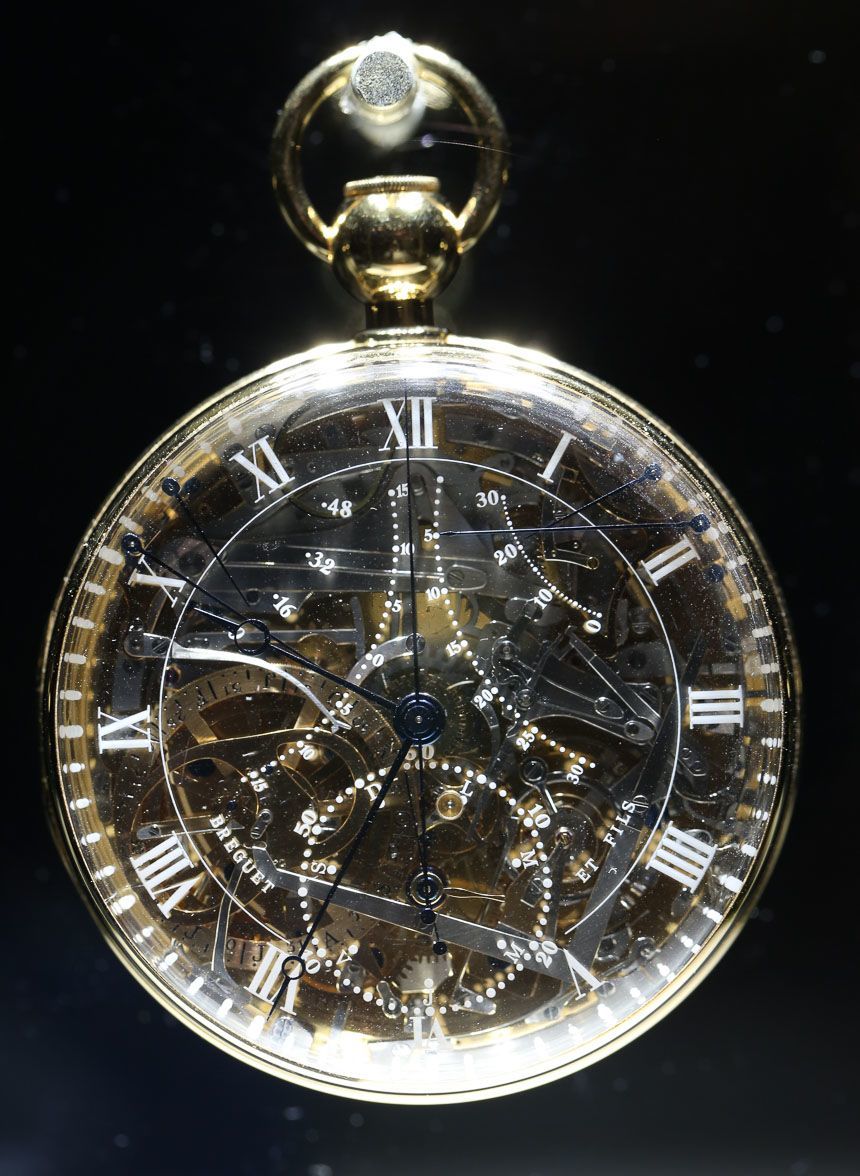
The Breguet 1160 Marie Antoinette pocket watch
is truly one of the most impressive and fascinating horological objects of our modern times. In many ways, this watch and the story around it have formed the foundation for what keeps me in love with timepieces and why I started aBlogtoWatch in the first place. This article is perhaps not true a “hands-on,” as no one but a select few “watch handlers” at Breguet are even allowed to touch what is probably the most valuable modern pocket watch of all time. In 2013, an estimated value for the Breguet 1160 pocket watch was set at US$30 million. Its true value could be much more but will likely never be tested during my lifetime, as this product remains a permanent part of the Breguet brand.
Even though brands like Patek Philippe and Vacheron Constantin currently have more complicated pocket watches, the Breguet 1160 Marie Antoinette remains the 5th or 6th most complicated pocket watch in the world, even though it is based on the original Breguet 160 pocket watch, that held the position as the most complicated watch ever made for about 100 years after being completed in 1827 (45 years after it was originally commissioned in 1782). My friend and fellow watch lover John Biggs chronicled the modern and past history of the Breguet Marie Antoinette watch in his book here.
Breguet debuted the Breguet 1160 Marie Antoinette “replica” back in 2008. I covered the story here, with a lot more background information about the original Breguet 160, its story, loss, and eventual recovery. If you are interested in this story, I highly recommend checking out that article because the story of the reference 160 Marie Antoinette timepiece is one that all watch lovers should know.
More so, a number of elements of the history, both long ago and modern, of the 160 are still to a degree mostly unknown to the public. It is actually a pure coincidence that Breguet unveiled the Breguet 1160 Marie Antoinette pocket watch just months after the original 160 was found. Today, the Breguet 160 Marie Antoinette “original” pocket watch is on display at the L. A. Mayer museum in Jerusalem, Israel. It is more than likely the most valuable horological object in existence.
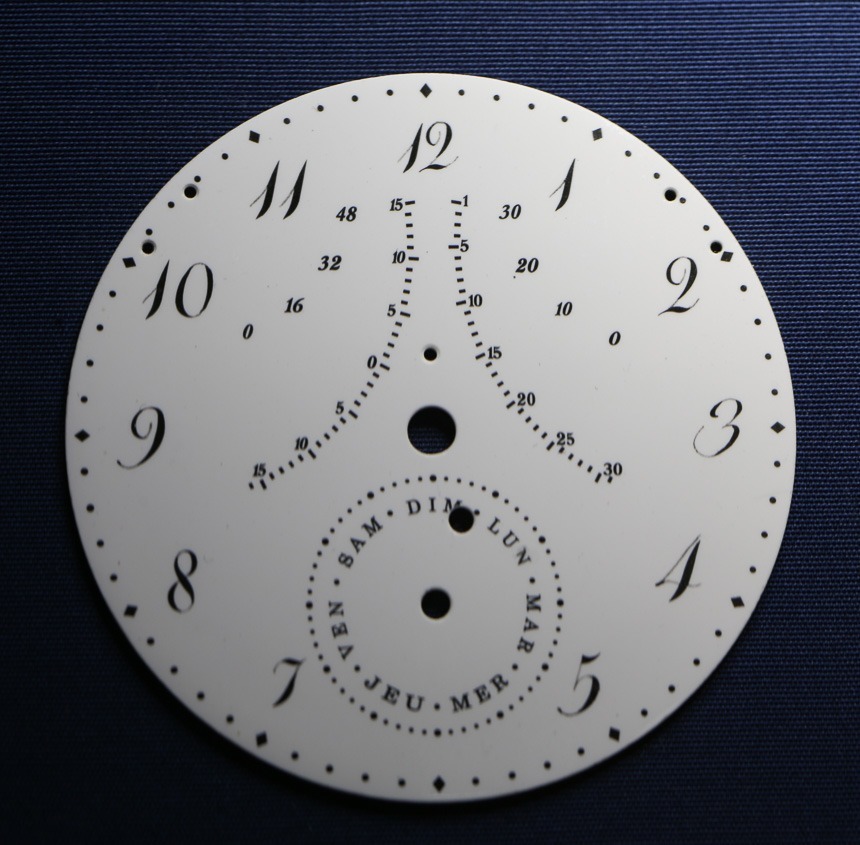
I mention the above coincidence because many people mistakenly believed that the brand released the Breguet 1160 Marie Antoinette because of the re-discovery of the 160. This is wrong. Breguet had been secretly working on replicating the 160 for about five years up to that point. The modern Breguet brand is named for its original founder Abraham-Louis Breguet. Often known as the “grandfather” (or father) of modern watchmaking, the Breguet brand continued for many generations through various family members after his death.
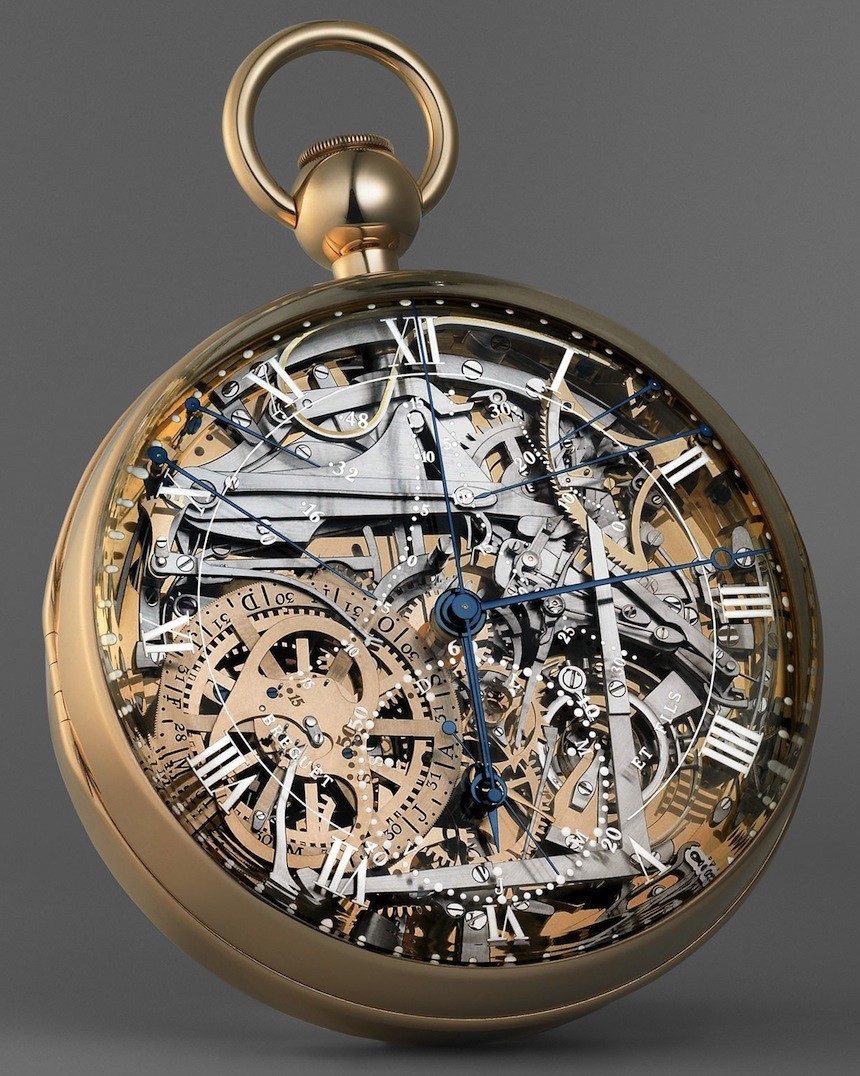
In the 1980s Breguet was brought back to life in its modern iteration through a new group of investors mostly separated from the original Breguet family (though, today, parts of the original Breguet family are part of the brand again). It was watch maker and designer Daniel Roth who formed the modern look of the brand’s wrist watches being inspired by historic Breguet pieces. Only something like 5,000 Breguet watches and clocks were produced during Abraham-Louis Breguet’s lifetime.
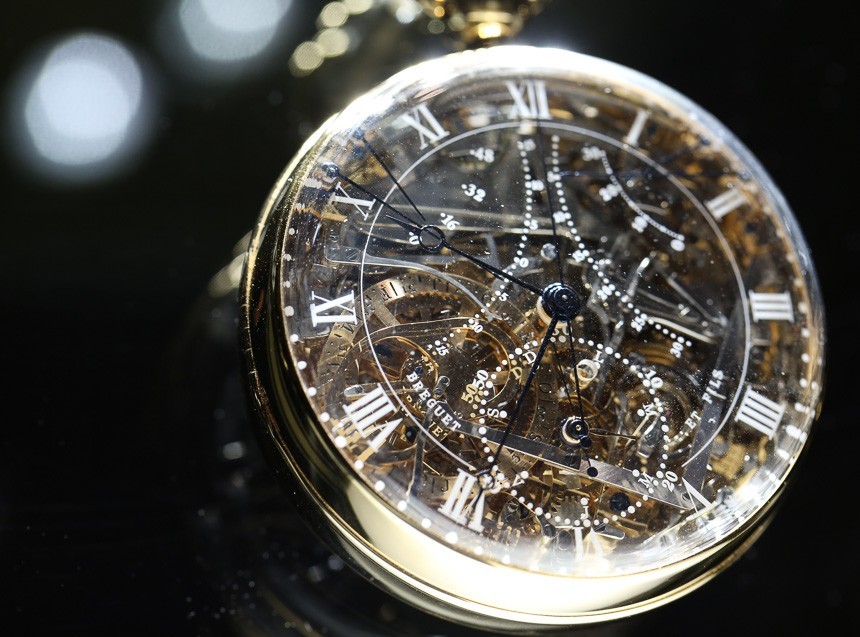
In September, 1999, the Swatch Group purchased Breguet from an investment group. It was the dream of the late Nicolas G. Hayek to own the brand. Mr. Hayek senior started the Swatch Group in the 1980s, and is often credited with “saving” the Swiss watch industry during the quartz crisis. Hayek was known to be absolutely obsessed with Breguet and often referred to his favorite brand as the “Jewel of the Swatch Group.” His passion lives on today, as his grandson, Marc Hayek, is the CEO of the company.
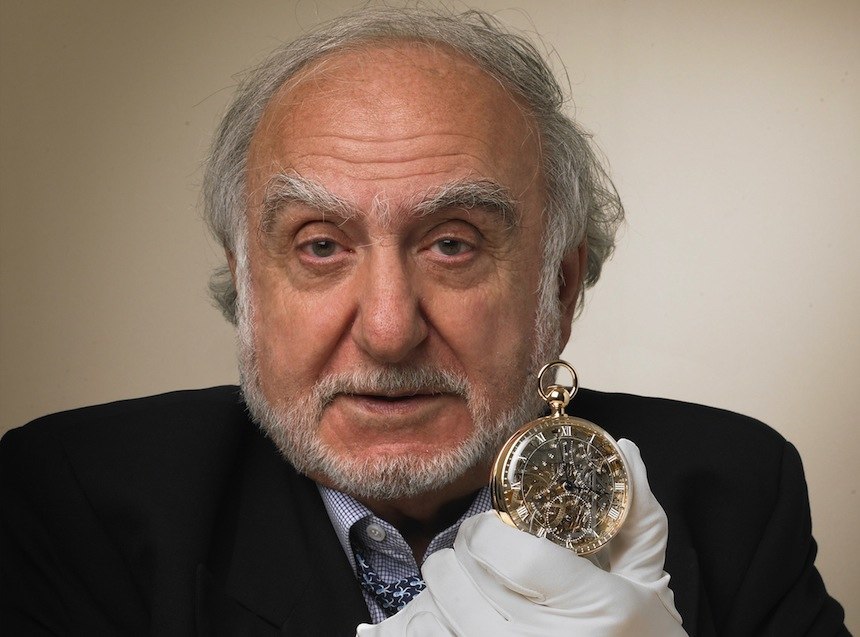
The late Nicolas Hayek Sr. posing with the finished Breguet 1160 Marie Antoinette replica pocket watch
Hayek senior reportedly hated the fact that the whereabouts of the 160 Marie Antoinette pocket watch were unknown. He then decided to produce a replica of the original entirely based on written descriptions and drawings made during the pocket watch’s design and construction. Reproducing the 160 pocket watch into what became the Breguet 1160 Marie Antoinette using only visual and written aids is one of the least discussed achievements in modern watchmaking. Remember the romance of the original? It was commissioned by a lover of Marie Antoinette for her, back in 1783. It was completed after she (and Breguet himself) died, and it represented what many argue was the pinnacle of Breguet’s lifework: to combine complications with everlasting beauty and mechanical fascination.
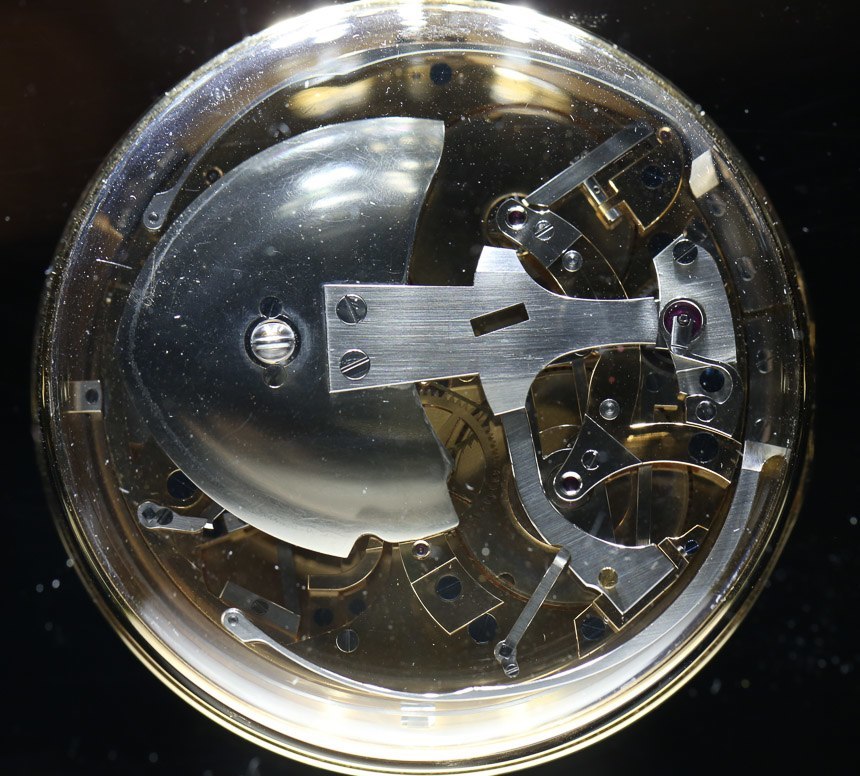
The video further above is from the 2008 Baselworld watch trade show event where Nicolas G. Hayek is personally presenting the watch. It is just a few months after the 160 made headlines after being discovered again in late 2007. Even the wooden box produced for it was a marvel, using wood from a special tree made famous by Marie Antoinette that Breguet reportedly purchased for something like 7 million Euros. If I recall correctly, the tree fell over naturally, but the condition upon which Versailles would sell the tree to Breguet was if it “donated” money for the restoration of the famed French palace.
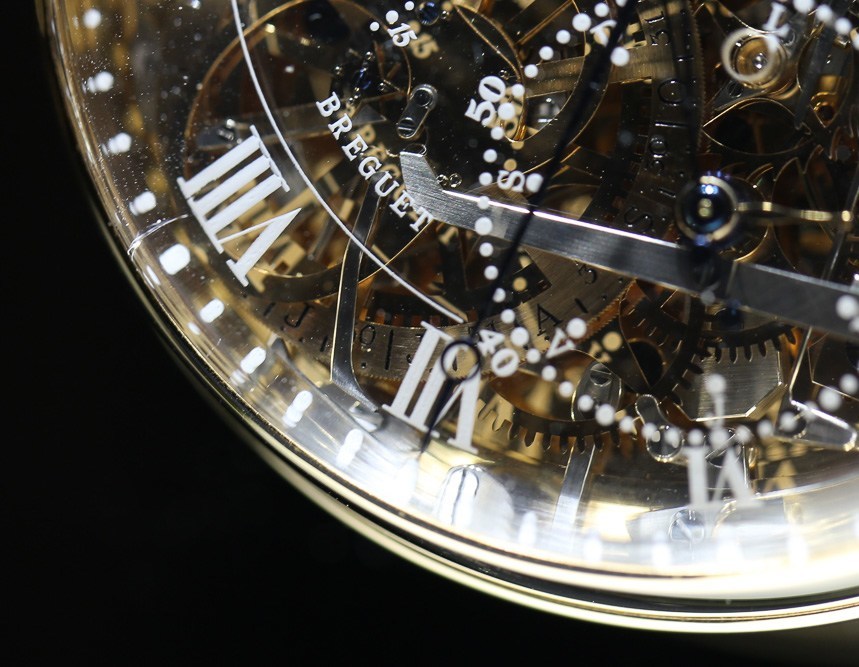
At 63mm wide in 18k gold, the Breguet 1160 Marie Antoinette attempted to replicate the original 160 in every way possible from the complications to the crystal made of natural rock crystal. In addition to the time and featuring automatic winding, the Breguet 1160 Marie Antoinette pocket watch has a perpetual calendar, chronograph, minute repeater, thermometer, power reserve indicator and more special technical features which even today remain impressive; all with a skeletonized, dial-free design.
Actually, Breguet did produce an “optional” dial for the Breguet 1160 Marie Antoinette, which I’ve taken pictures of next to the pocket watch. I don’t know if it has ever actually been put into the pocket watch, but it is interesting that it exists. You can learn more about the Breguet 1160 Marie Antoinette pocket watch here via Breguet.
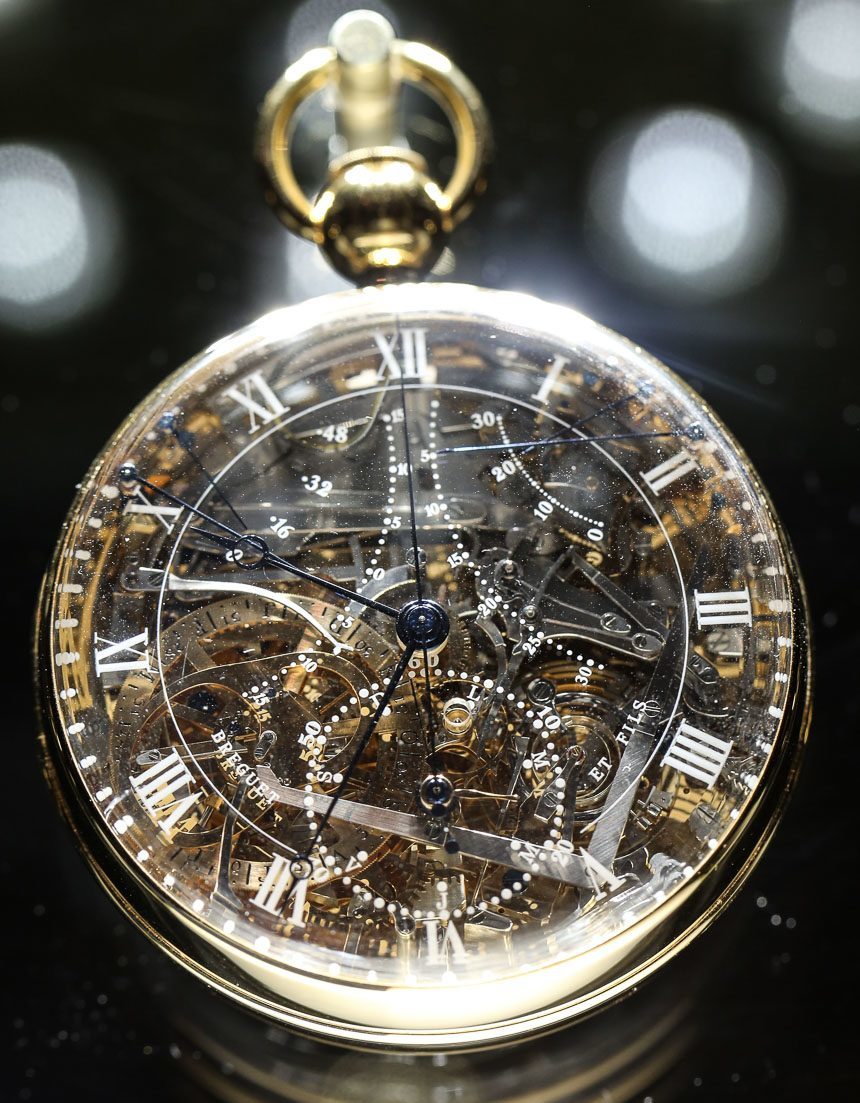
Without the aid of any special lighting or a tripod (thanks, Legion of Honor) I attempted to capture the Breguet 1160 Marie Antoinette pocket watch as well as possible. I hope that you can at least appreciate the majesty and grand presence that this immensely impressive modern marvel has. In addition to being the stuff of collectors’ dreams, it also single-handedly explains to so many people why a pursuit in fine timepieces is both intellectually and emotionally rewarding. I’m so happy to have had a chance to check it out. Unfortunately, I never got to meet Nicolas G. Hayek senior myself – nor will I ever. He is someone that, at this stage in my “watch career,” I think I would have had some great interactions with. Some amusing trivia: as a young watch writer, I had submitted some interview questions to Mr. Hayek. Unfortunately, he never got to answering them, as they lay on his desk when he died of cardiac arrest in his office in 2010. I’ve always harbored the fear – albeit wild – that my questions may have been among the last things he ever saw.

I am pleased to announce that the Breguet 1160 Marie Antoinette pocket watch is available for the public to view at the Breguet: Art & Innovation In Watchmaking special exhibit that will be held at the San Francisco Legion of Honor from September 19th, 2015, until January 10, 2016. I highly recommend checking out this really wonderful display of historic Breguet timepieces should you be in the San Francisco area. breguet.com

